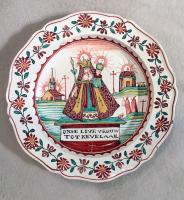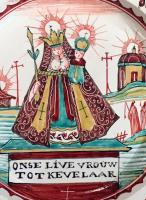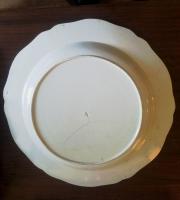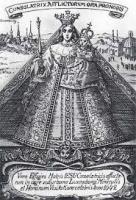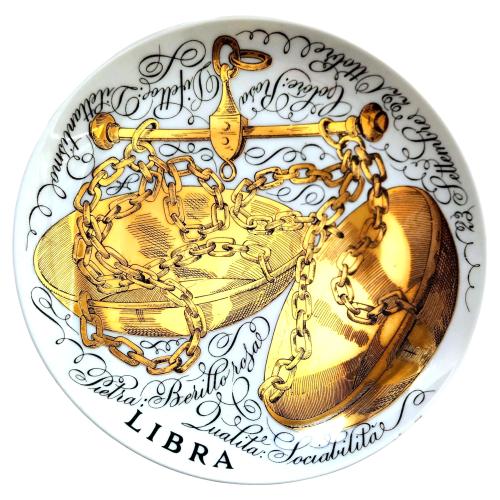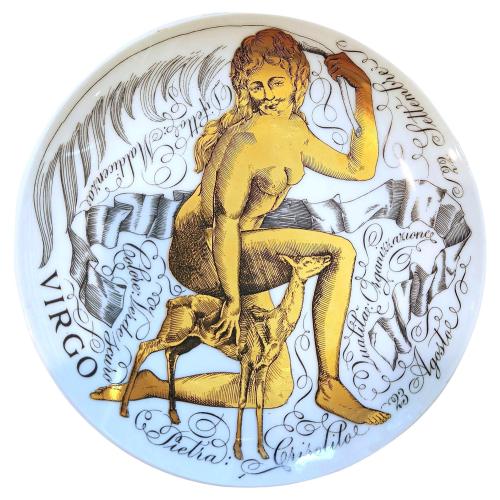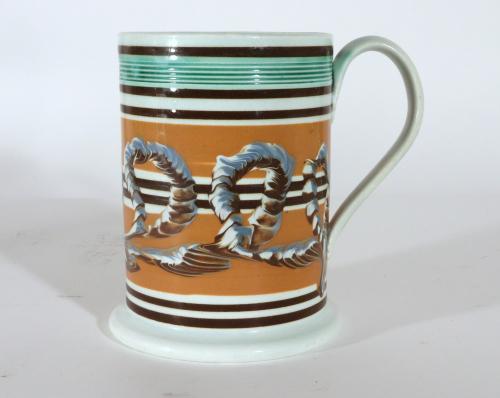
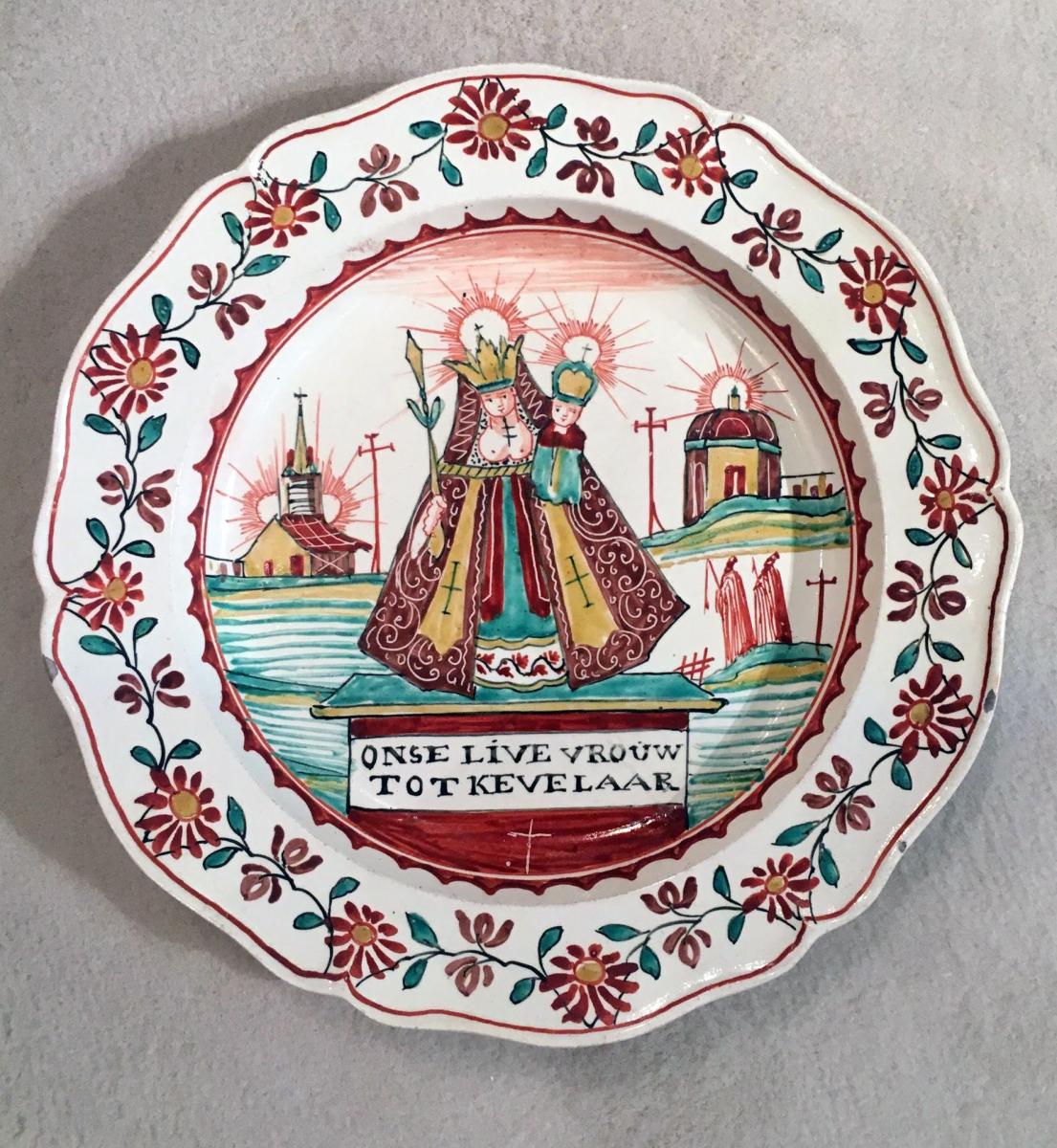
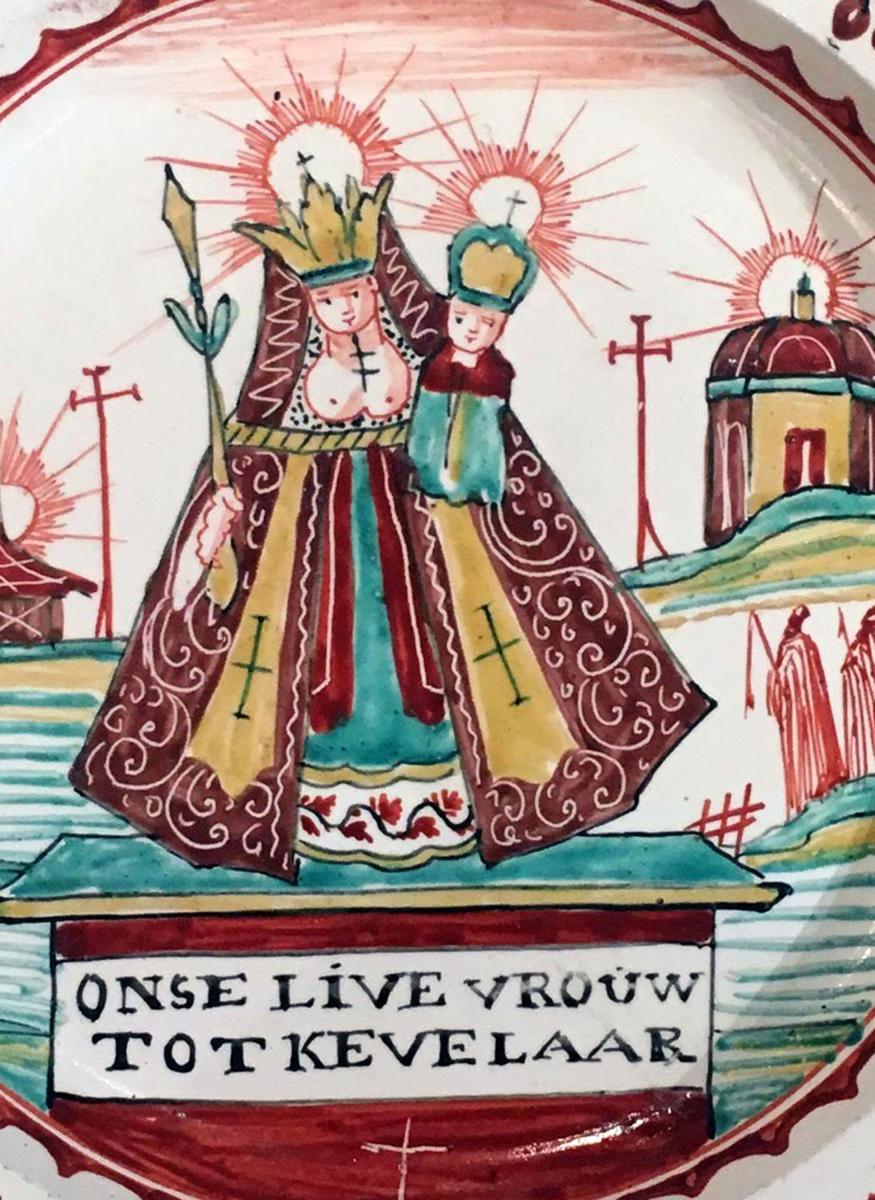
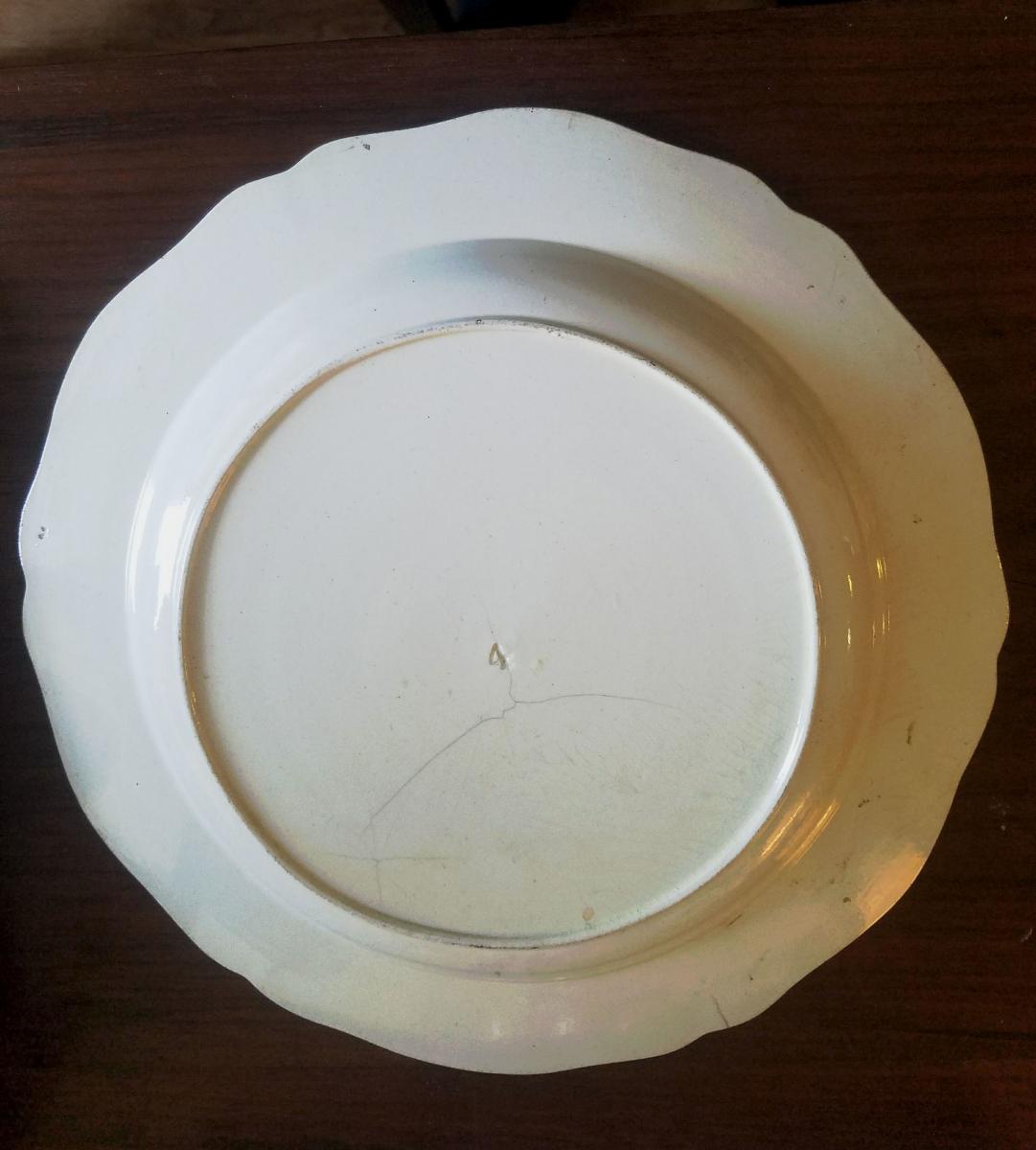
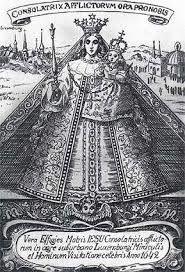
Price
£535.00This object is eligible for a Certificate of BADA Provenance
The BADA Standard
- Since 1918, BADA has been the leading association for the antiques and fine art trade
- Members are elected for their knowledge, integrity and quality of stock
- Our clients are protected by BADA’s code of conduct
- Our dealers’ membership is reviewed and renewed annually
- Bada.org is a non-profit site: clients deal directly with members and they pay no hidden fees
Dutch-decorated English Creamware Plate.
Onse Live Vrouw Tot Kevelaar (Our Lady to Kevelaar).
Circa 1765-85.
A shaped creamware deep plate decorated in Holland with an image of the Virgin Mary and Jesus with a halo surrounding their heads. The Virgin wears an ornate robe and holds a staff in her right hand. Chapels and a cross can be seen to either side. Below the figures is a panel reading Onse Live Vrouw Tot Kevelaar (Our Lady to Kevelaar).
Dimensions: 10 1inches diameter x 1 1/4 inches high.
Mark: Impress numeral 4.
Painting in excellent condition with bright strong colours. There is a star-crack to the reverse which does not come through to the front.
Interestingly, the Virgin Mary is shown with bare breast. In Margaret Miles's book A Complex Delight: The Secularization of the Breast, 1350-1750, the author traces the disappearance of depictions of Mary breastfeeding after the Renaissance.
Miles notes that before the Renaissance, the lactating virgin was the primary symbol of God's love for humanity. To show Mary breastfeeding Christ was to display Christ's humility and love for humanity by himself becoming fully human, so human that he was literally kept alive by the milk of his mother's breast.
The breastfeeding Mary, or Maria Lactans, surfaced early in the Christian tradition, as evidenced by an image of Mary suckling Jesus in a 3rd-century fresco in Rome. The motif became increasingly popular in the Middle Ages and appeared in shrines and paintings as a symbol not only of Christ's humility in taking on flesh, but as a reminder of the holy comfort offered to those who followed him.
But as Renaissance ideas and technologies blossomed, the Maria Lactans all but disappeared.
(https://www.washingtonpost.com/news/acts-of-faith/wp/2015/05/28/how-images-of-mary-mother-of-jesus-have-long-shown-breast-is-best/?utm_term=.87e2e3e1cc77).
Kevelaer is a municipality in the district of Kleve, in North Rhine-Westphalia in Germany. It is the largest Catholic pilgrimage location within north-western Europe. More than 1 million pilgrims, mostly from Germany and the Netherlands, visit Kevelaer every year to honour the Virgin Mary. The population in 2015 was 28,311.
History
Kevelaer is a center of veneration and pilgrimage to Our Lady, Comforter of the Afflicted (also known as Our Lady of Consolation. According to tradition, a merchant praying in front of a cross in a field heard a voice that told him: "Here thou shalt build me a chapel." His wife dreamt of a little chapel with a Madonna that someone had previously advised her to purchase.
In 1642 a copperplate engraving, representing Our Lady of Luxembourg, was installed in a sanctuary erected the same year. It is one of the best visited Catholic pilgrimage locations in north-western Europe. The Gnadenkapelle [Chapel of Grace] has drawn pilgrims to the Lower Rhine Region from all over the world for more than 360 years. Pope John Paul II visited in 1987.
Dimensions
diameter: 25.4cmCondition report
Good with st in any way a crack to underside which does not come through to frontThe BADA Standard
- Since 1918, BADA has been the leading association for the antiques and fine art trade
- Members are elected for their knowledge, integrity and quality of stock
- Our clients are protected by BADA’s code of conduct
- Our dealers’ membership is reviewed and renewed annually
- Bada.org is a non-profit site: clients deal directly with members and they pay no hidden fees


